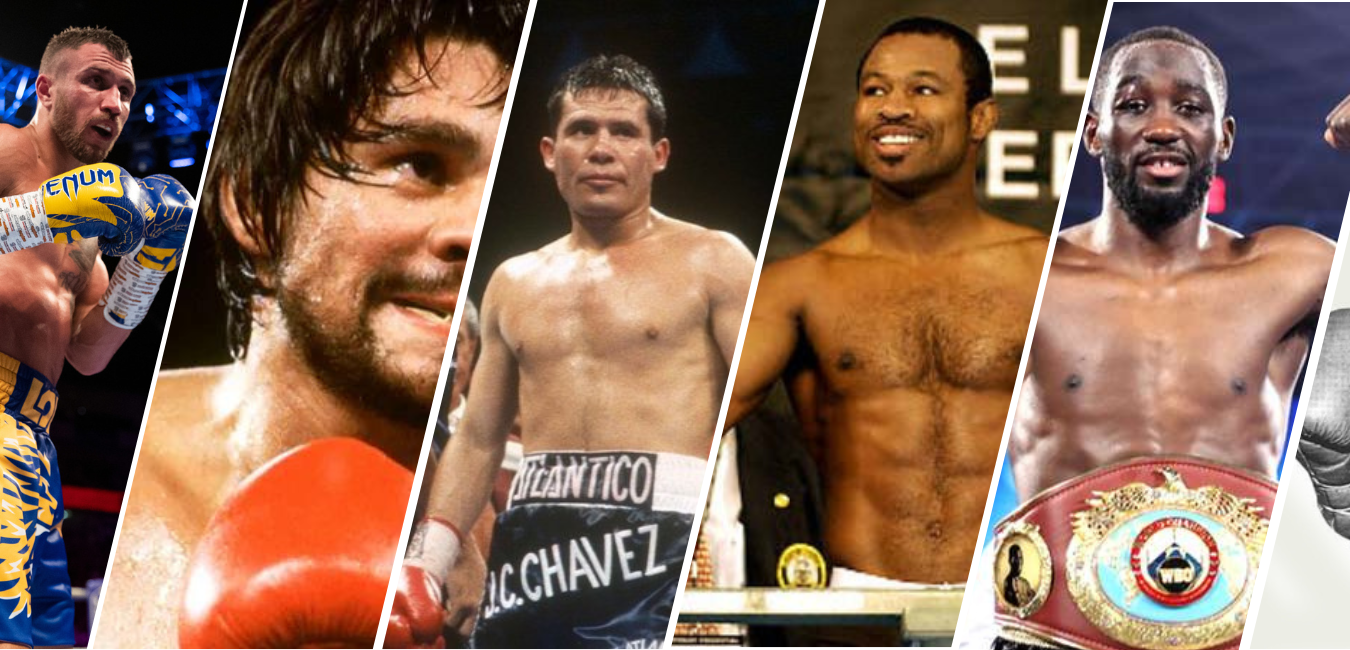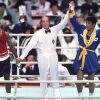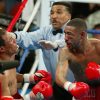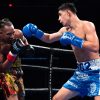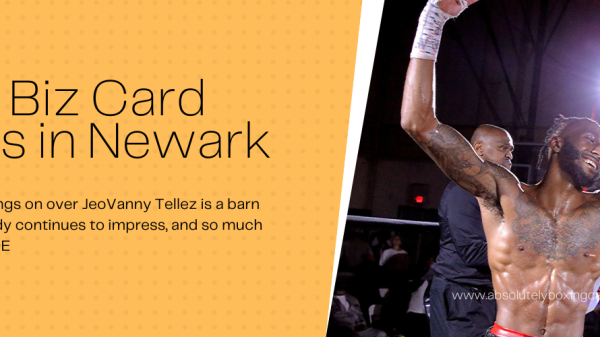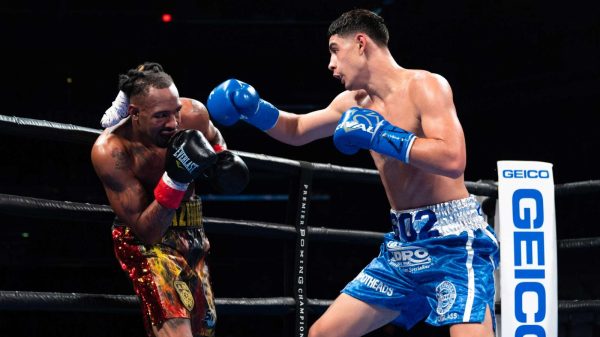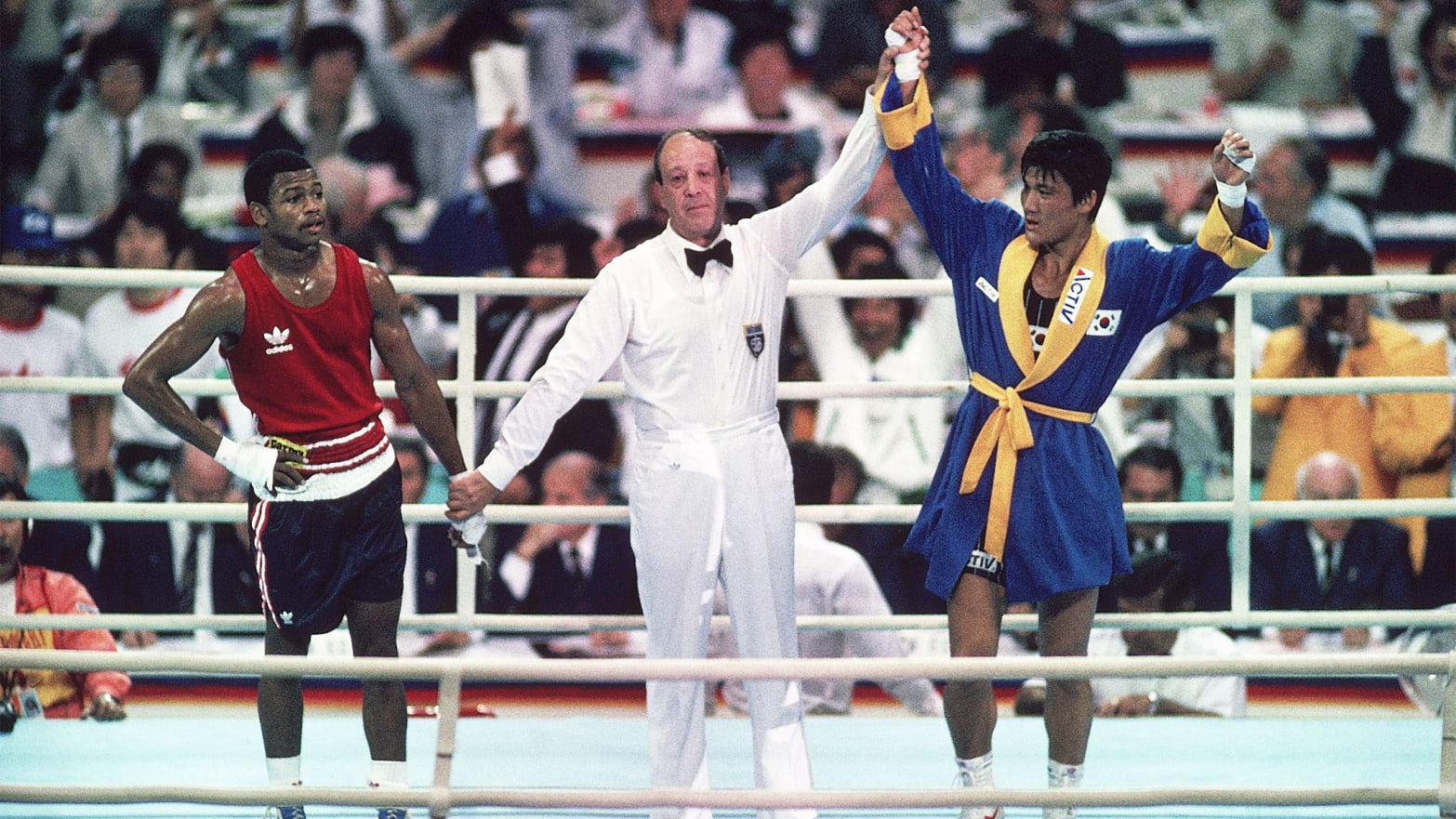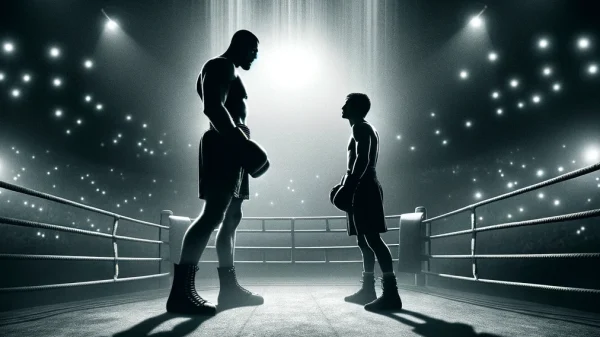The lightweight division in boxing, accommodating fighters up to 135 pounds, stands as one of the sport’s most dynamic and historically rich categories. Established in the early 20th century, this division has been a crucible of speed, technique, and agility, often producing bouts that are as technically captivating as they are fiercely competitive. The lightweight ranks have been graced by a pantheon of boxing legends whose names are etched in the annals of the sport’s history, contributing to its vibrant narrative and evolution. From the early days of Joe Gans, known as the “Old Master” for his pioneering ring craft and strategic finesse, to the era of Benny Leonard, whose dominance in the 1920s set new standards for boxing excellence, the division has consistently showcased the artistry of boxing at its most refined.
As the division evolved, it continued to be a showcase for talent that transcended geographical and cultural boundaries, reflecting the global appeal of boxing. The mid-20th century saw the rise of figures like Roberto Durán from Panama, whose ferocious style and indomitable spirit earned him the nickname “Hands of Stone,” and later, the sublime skills of Pernell Whitaker and Julio César Chávez in the 1980s and 1990s, who captivated fans with their contrasting styles—Whitaker’s defensive genius and Chávez’s relentless aggression. In recent years, the lightweight division has continued to thrive, highlighted by the exploits of modern icons such as Vasyl Lomachenko and Teofimo Lopez, whose remarkable abilities and compelling matchups have drawn a new generation of fans to the sport. The lightweight division, with its rich tapestry of historical significance and ongoing contribution to the sport’s narrative, remains a cornerstone of professional boxing, continually redefining the limits of what athletes in this weight class can achieve.
The Emergence of Lightweight Titans in Boxing’s Early Days
The early history of the lightweight division in boxing, a weight class that typically encompasses fighters up to 135 pounds, is a fascinating tale of pugilistic evolution, marked by legendary figures and landmark bouts that laid the foundation for what has become one of the sport’s most celebrated divisions. In the nascent days of boxing, particularly during the late 19th and early 20th centuries, the sport was still in the process of formalizing weight classes, rules, and regulations. The lightweight division emerged during this period of standardization, creating a space for fighters who were smaller than the welterweights but larger than the featherweights, thereby filling a crucial gap in the competitive landscape. One of the earliest icons of the division was Joe Gans, an African American boxer who became known as the “Old Master” for his technical skills, ring intelligence, and strategic prowess. Gans’s landmark victory in 1902 over Frank Erne, which earned him the World Lightweight title, is often cited as a defining moment that brought the division into prominence. Gans’s reign, characterized by his innovative techniques and tactical acumen, set a high standard for future champions and helped elevate the lightweight division to a respected and eagerly followed category in the boxing world.
Following Gans, another luminary who contributed significantly to the early history of the lightweight division was Benny Leonard, widely regarded as one of the greatest lightweights of all time. Leonard’s tenure as champion, spanning from 1917 to 1925, was marked by his exceptional boxing skills, defensive capabilities, and ring generalship. Leonard’s dominance and the manner in which he dispatched challengers not only solidified his legacy but also enhanced the stature of the lightweight division. His battles against formidable opponents, such as Richie Mitchell and Lew Tendler, were not merely contests of physical prowess but also exhibitions of strategic thinking and psychological warfare, elements that have since become integral to the sport.
The early history of the lightweight division is also notable for its reflection of broader social and cultural dynamics of the time. Boxers like Gans and Leonard, coming from diverse backgrounds, navigated the complex landscape of racial and ethnic identities, contributing to the sport’s evolving narrative around inclusivity and representation. Their successes and challenges both inside and outside the ring added layers of significance to their accomplishments and the division’s development.
Moreover, the lightweight division’s early days were characterized by a vibrant and competitive scene, with numerous fighters vying for supremacy and the chance to etch their names in the annals of boxing history. This period saw a proliferation of talent and an increase in public interest in boxing, fueled by the advent of new media technologies like radio and the burgeoning sports press, which brought the exploits of lightweight fighters to an ever-widening audience. The division’s growth was further spurred by the establishment of governing bodies and sanctioning organizations, which helped standardize rules, organize championships, and lend a sense of legitimacy and structure to the sport.
The Golden Age of Lightweight Boxing Brilliance
The golden age of the lightweight division in boxing, spanning from the 1950s through the 1980s, is often heralded as a period of unparalleled talent, riveting rivalries, and bouts that have since become the stuff of legend. This era was marked by an abundance of charismatic champions and challengers whose skill, heart, and determination captured the imagination of fans worldwide. It was a time when the lightweight division was consistently at the forefront of the boxing scene, producing a series of memorable fights that highlighted the technical prowess and sheer courage of its competitors. One of the defining figures of this era was Roberto Durán from Panama, whose fearsome style and indomitable will earned him the moniker “Hands of Stone.” Durán’s reign as lightweight champion in the 1970s was characterized by his aggressive approach and devastating power, making him a feared and respected figure in the division. His legendary bouts, particularly his fierce rivalries with Esteban De Jesús, showcased the intensity and passion that defined lightweight boxing during this period. Durán’s eventual move up in weight and continued success only added to the legacy of the division he once dominated.
The golden age also saw the emergence of other outstanding champions like Carlos Ortiz and Ismael Laguna, whose technical skills and strategic acumen were on full display in their classic encounters. Ortiz, with his slick boxing style and resilience, and Laguna, known for his speed and agility, epitomized the high level of competition in the lightweight ranks during this time. Their battles for supremacy, along with their encounters with other top contenders, kept the division in a constant state of excitement and flux.
This era was not just about the champions but also about the incredible depth of talent in the division. Fighters like Ken Buchanan, whose skill and toughness brought him into the international spotlight, and José Luis Ramírez, whose power and durability made him a perennial contender, contributed to a competitive landscape where any champion could be dethroned on any given night. The golden age was characterized by a global expansion of the sport, with champions and challengers emerging from all corners of the world, adding to the division’s rich tapestry of styles and backgrounds.
The lightweight division during this golden age was also reflective of broader societal changes, with boxing often serving as a microcosm of the social and political dynamics of the times. The rise of television as a mass medium brought the sport into living rooms around the globe, amplifying the fame of its stars and making their bouts accessible to an unprecedented audience. This era’s fighters became household names, their rivalries and triumphs becoming part of the broader cultural narrative.
Lightweights in the Limelight: The Thrilling Era of the ’70s and ’80s
The 1970s and 1980s represented a vibrant and transformative era for the lightweight division in boxing, characterized by the emergence of iconic fighters, legendary bouts, and a global expansion that brought the division into the international spotlight. This period, often celebrated for its competitive intensity and technical brilliance, was a time when the lightweight ranks were filled with an array of diverse talents, each bringing their unique style and charisma to the ring.
The 1970s were marked by the dominance of Roberto Durán of Panama, whose fearsome reputation and formidable skills earned him the nickname “Hands of Stone.” Durán’s reign as the lightweight champion was not just about his power but also his technical prowess and ring intelligence,which allowed him to outmaneuver and overpower opponents. His legendary battles, particularly with Esteban De Jesús, encapsulated the era’s competitive spirit. Their trilogy of fights, characterized by tactical brilliance and raw intensity, highlighted the division’s depth and the razor-thin margins between victory and defeat. Durán’s eventual move up in weight classes, after an impressive run that included lightweight titles, signified the end of an era but also set the stage for new champions to emerge.
The late 1970s and into the 1980s saw the rise of other remarkable talents, including the likes of Ken Buchanan from Scotland, whose skill and determination made him a standout figure. Buchanan’s memorable bout with Durán in 1972, despite its controversial ending, showcased the high level of international competition in the division. Meanwhile, American boxer Ray “Boom Boom” Mancini brought a compelling narrative and relentless fighting style to the lightweight scene, capturing the public’s imagination with his quest for the title in honor of his father, a former contender whose own career was cut short by World War II.
The 1980s further solidified the lightweight division’s reputation for producing thrilling matchups, with fighters like Alexis Argüello of Nicaragua, whose elegance and power made him one of the era’s most respected champions. Argüello’s attempt to become the first boxer to win world titles in four weight divisions, culminating in his epic encounters with Aaron Pryor, transcended the lightweight category and became part of boxing folklore. This era also witnessed the emergence of Julio César Chávez, who began his ascent to becoming one of boxing’s all-time greats. Chávez’s incredible durability, ferocious body attack, and remarkable winning streak captivated fans and made every one of his fights an event. His battles in the lightweight division, including memorable fights against Meldrick Taylor and Edwin Rosario, were marked by his relentless pressure and ability to break down even the most formidable opponents.
The 70s and 80s were not just about individual champions but also about the depth of talent in the division. Fighters like Howard Davis Jr., an Olympic gold medalist with slick boxing skills, and Cornelius Boza-Edwards, known for his heart and tenacity, contributed to a highly competitive landscape where no champion could rest on their laurels. The era was characterized by a mix of styles, from the technical wizardry of Argüello to the all-action brawling style of Mancini, showcasing the division’s diversity and the myriad pathways to victory within the ring.
Beyond the individual achievements and memorable bouts, this period in the lightweight division’s history was also significant for its broader impact on the sport of boxing. The internationalization of the division, with champions and contenders hailing from across the globe, reflected boxing’s growing global reach. The advent of cable television and pay-per-view broadcasts expanded the audience for boxing, turning fighters into international stars and making their bouts accessible to a worldwide audience.
The Lightweights Redefine Boxing in the ’90s
The 1990s in the lightweight division of boxing was an era marked by transition, innovation, and the rise of new stars, setting the stage for a dynamic evolution of the sport. This decade witnessed the emergence of fighters who would redefine what it meant to be a lightweight, blending speed, power, and technical sophistication to dominate the division and captivate audiences worldwide.
At the heart of this transformation was the legendary Mexican boxer Julio César Chávez, whose reign in the early part of the decade continued to build on his already formidable legacy. Chávez’s iron chin, relentless body attack, and unparalleled resilience made his bouts must-see events, and his fight against Meldrick Taylor in 1990 is often cited as one of the most dramatic and controversial in boxing history. This fight, with its last-second stoppage, underscored the intensity and unpredictability that would come to define the lightweight division during the 90s.
The mid to late 1990s saw the rise of “The Golden Boy,” Oscar De La Hoya, whose Olympic pedigree, charismatic persona, and formidable skill set brought a new level of attention to the lightweight ranks.
De La Hoya’s move through the division, culminating in his memorable 1996 bout against Genaro Hernández, showcased the blend of technical boxing and power punching that would become a hallmark of the era’s champions. De La Hoya’s crossover appeal, combined with his in-ring success, played a significant role in popularizing the lightweight division and the sport of boxing as a whole during the 90s.
This period also witnessed the ascendancy of fighters like Shane Mosley, whose explosive power and speed earned him the nickname “Sugar.” Mosley’s dominance of the division, marked by his impressive knockout victories and technical prowess, set new standards for what it meant to be a champion in the lightweight ranks. His battles within the division, particularly his victory over Philip Holiday to capture the IBF lightweight title, highlighted the competitive depth and talent present in the 90s lightweight scene.
The 1990s were not only about the champions but also about the rich tapestry of contenders and rising stars who contributed to the division’s vibrancy. Fighters like Azumah Nelson, Jesse James Leija, and Gabriel Ruelas, among others, brought diverse styles and backgrounds to the ring, creating a dynamic and competitive landscape that kept fans on the edge of their seats. Beyond individual achievements, the 1990s in the lightweight division were characterized by a broader shift in the sport, with advancements in training, nutrition, and fight promotion reshaping the landscape. The increased use of pay-per-view and the growing influence of cable networks like HBO and Showtime expanded the division’s reach, bringing lightweight boxing to a global audience and setting the stage for the division’s continued evolution in the new millennium.
New Millennium, New Champions: The Rise of Lightweights in the 2000s
The lightweight division in boxing has undergone a remarkable transformation from the early 2000s to the present day, characterized by the emergence of a new generation of fighters who have redefined the boundaries of the sport. This era has been marked by an unprecedented level of global diversity, technical innovation, and thrilling matchups that have captivated fans worldwide.
The early 2000s saw the rise of Mexican boxer Juan Manuel Márquez, a fighter known for his exceptional counterpunching skills, precision, and tactical acumen. Márquez’s storied rivalry with Manny Pacquiao, though primarily contested above the lightweight limit, brought significant attention to the lighter weight classes and showcased the high level of competition and skill present in these divisions. Márquez’s battles within the lightweight division, including his victory over Joel Casamayor in 2008 to capture the Ring magazine lightweight title, solidified his status as one of the era’s defining fighters.
Meanwhile, the emergence of fighters like Diego Corrales and José Luis Castillo, who engaged in one of the most memorable fights in boxing history in 2005, underscored the lightweight division’s reputation for producing thrilling, action-packed bouts. Their epic encounter, which showcased both fighters’ resilience, power, and heart, is often cited as a testament to the spirit and competitiveness of the lightweight division.
The late 2000s and early 2010s witnessed the ascent of Venezuelan boxer Jorge Linares, who brought a combination of speed, skill, and elegance to the ring. Linares’s reign as a multi-time lightweight champion, punctuated by victories over fighters like Anthony Crolla and Luke Campbell, highlighted the division’s continuing evolution and the emergence of a truly global talent pool.
In more recent years, the lightweight division has been defined by a new wave of stars, including Vasyl Lomachenko, Teófimo López, Gervonta Davis, and Devin Haney. Lomachenko, with his unparalleled footwork, angles, and boxing IQ, has been a transformative figure, pushing the boundaries of what is possible in the ring. The unification bout between Lomachenko and López in 2020, in which López emerged victorious, marked a passing of the torch and the beginning of a new era in the division.
The lightweight division’s current landscape is characterized by an exciting mix of established champions and rising stars, setting the stage for a series of potential super fights that promise to captivate the boxing world. The division’s depth of talent, combined with the fighters’ willingness to face off against the best, suggests that the lightweight division will continue to be a centerpiece of the boxing scene for years to come.


